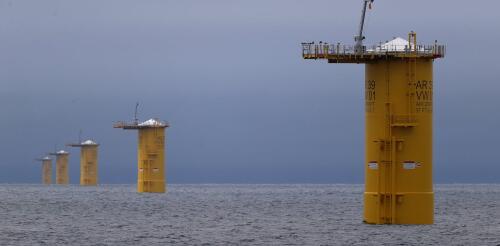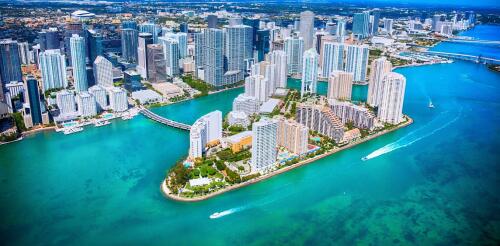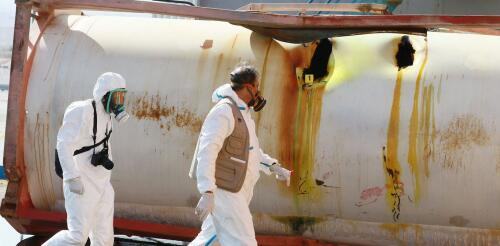environment
Thousands of earthquakes in recent weeks have shaken the Icelandic fishing town of Grindavík, about 30 miles (50 kilometers) southwest of the capital Reykjavik. They have triggered evacuations and warnings that a volcanic eruption may be imminent. While the idea of magma rising was no doubt scary for tourists visiting the nearby Blue Lagoon geothermal spa, which was closed as a precaution, Iceland’s residents have learned over centuries to live with their island’s overactive geology. So, why is Iceland so volcanically active? The answer has two parts: One has to do with what geologists unimaginatively call a hotspot, and the other involves giant tectonic plates that are pulling apart right beneath the island. As a geologist, I study both. Eruptions in this region of Iceland tend to flow rather than being explosive, as residents saw in July 2023 and in 2021-22. Kristinn Magnusson/AFP via Getty Images...
As renewable energy production expands across the U.S., the environmental impacts of these new sources are receiving increased attention. In a recent report, the National Academies of Sciences, Engineering, and Medicine examined whether and how constructing offshore wind farms in the Nantucket Shoals region, southeast of Massachusetts, could affect critically endangered North Atlantic right whales. The Conversation asked marine scientists Erin L. Meyer-Gutbrod, Douglas Nowacek, Eileen E. Hofmann and Josh Kohut, all of whom served on the study committee, to explain the report’s key findings. Why did this study focus on such a specific site? The Bureau of Ocean Energy Management, which is part of the U.S. Department of the Interior and regulates offshore energy production, asked the National Academies to conduct this study. Regulators wanted to better understand how installing and operating offshore, fixed-bottom wind turbine generators would affect physical oceanographic pr...
PFAS, the “forever chemicals” that have been raising health concerns across the country, are not just a problem in drinking water. As these chemicals leach out of failing septic systems and landfills and wash off airport runways and farm fields, they can end up in streams that ultimately discharge into ocean ecosystems where fish, dolphins, manatees, sharks and other marine species live. We study the risks from these persistent pollutants in coastal environments as environmental analytical chemists at Florida International University’s Institute of the Environment. Because PFAS can enter the food chain and accumulate in marine plants and animals, including fish that humans eat, the spread of these chemicals has ecological and human health implications. Biscayne Bay and nearby coastal areas are teeming with fish, including many varieties that people eat. NPS image by Shaun Wolfe I...
During the height of the COVID-19 pandemic, Detroit residents got a break from water shut-offs. In March 2020, just after the coronavirus made hand-washing a matter of public health, the City of Detroit announced a plan that kept water services on for residents for US$25 a month, with the first payment covered by the state. Although all Detroiters had access to water during the pandemic, they continued to be billed at the higher standard rates. In early 2023, Detroit resumed water shut-offs for bill nonpayment. Approximately 60,000, or 27% of Detroit’s 220,000 residential customers, had past-due bills last summer, according to the Detroit Water and Sewerage Department. The average customer owes $700, but some owe as much as $10,000 due to years of unpaid bills. Although a variety of factors contribute to large past-due balances, water services in Detroit are expensive for many households, and the costs are rising. We are geographers and policy analysts with an intere...
Many people encounter chlorine in their daily lives, whether it’s as an ingredient in household bleach or an additive that sanitizes water in swimming pools. Chlorine is also used as an antiseptic, a bleaching agent in the production of paper and cloth, and to kill microorganisms in drinking water. But this familiar chemical is also extremely toxic. And because it’s ubiquitous in many industries across the U.S., it often is released in chemical accidents and spills. As a pharmaceutical scientist, I study ways in which chemicals and other materials affect the human body. Currently, I am working to develop therapies to counteract chlorine gas exposure and to understand the mechanism by which chlorine harms people. One promising therapy that we are developing is inhalable nanoparticles that counteract lung damage following chlorine gas exposure. A common and dangerous chemical Chlorine is an extremely toxic and widely used chemical. In the U.S., it is one of the top...



